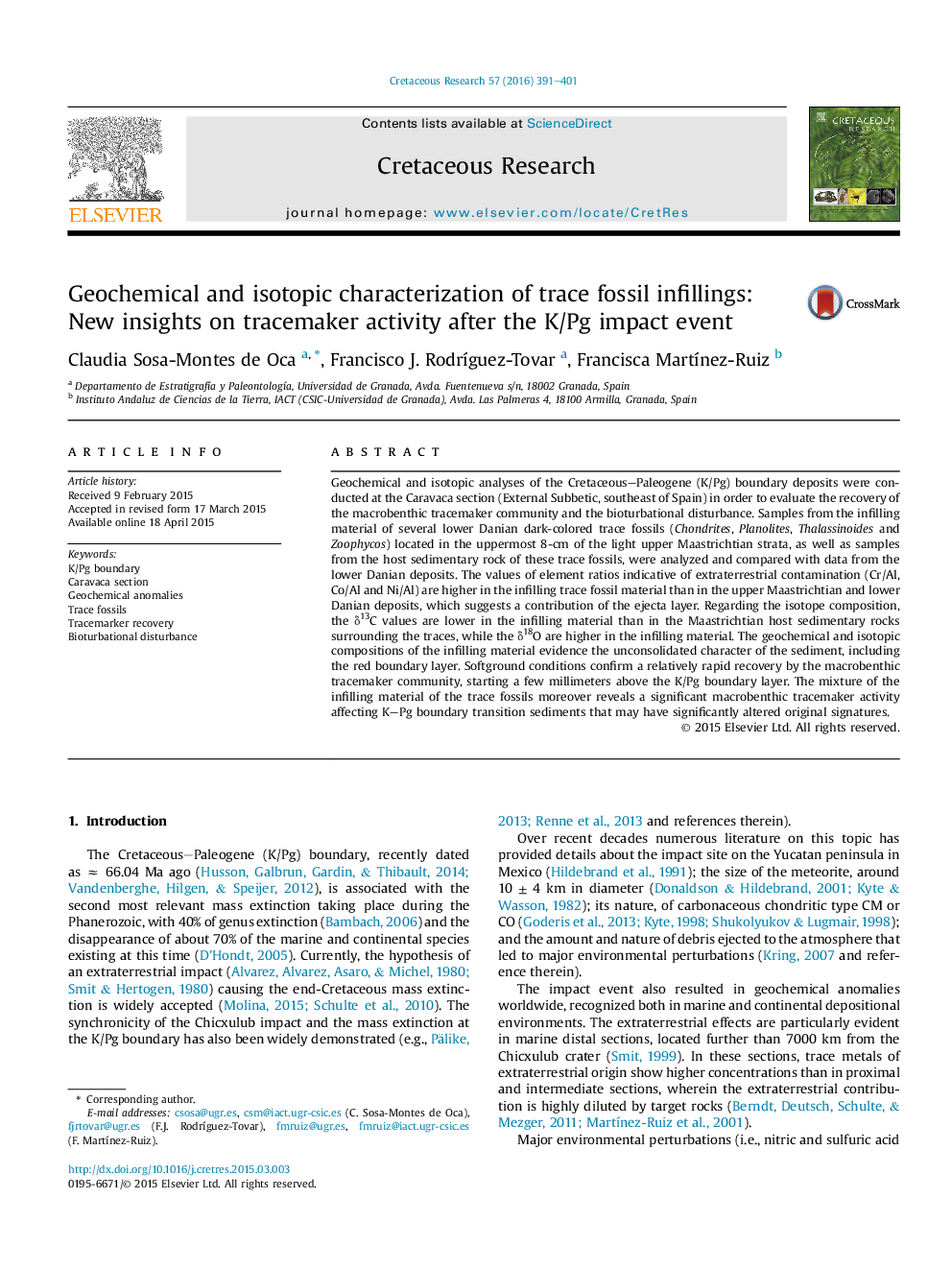| Article ID | Journal | Published Year | Pages | File Type |
|---|---|---|---|---|
| 4746811 | Cretaceous Research | 2016 | 11 Pages |
•The infilling of trace fossils from the K–Pg boundary transition has been analyzed.•Geochemical proxy evidence material from the ejecta layer infilling trace fossils.•Trace fossils distribution evidences a rapid recovery of the macrobenthic community.•Bioturbational disturbance should be considered for the K–Pg event reconstruction.
Geochemical and isotopic analyses of the Cretaceous–Paleogene (K/Pg) boundary deposits were conducted at the Caravaca section (External Subbetic, southeast of Spain) in order to evaluate the recovery of the macrobenthic tracemaker community and the bioturbational disturbance. Samples from the infilling material of several lower Danian dark-colored trace fossils (Chondrites, Planolites, Thalassinoides and Zoophycos) located in the uppermost 8-cm of the light upper Maastrichtian strata, as well as samples from the host sedimentary rock of these trace fossils, were analyzed and compared with data from the lower Danian deposits. The values of element ratios indicative of extraterrestrial contamination (Cr/Al, Co/Al and Ni/Al) are higher in the infilling trace fossil material than in the upper Maastrichtian and lower Danian deposits, which suggests a contribution of the ejecta layer. Regarding the isotope composition, the δ13C values are lower in the infilling material than in the Maastrichtian host sedimentary rocks surrounding the traces, while the δ18O are higher in the infilling material. The geochemical and isotopic compositions of the infilling material evidence the unconsolidated character of the sediment, including the red boundary layer. Softground conditions confirm a relatively rapid recovery by the macrobenthic tracemaker community, starting a few millimeters above the K/Pg boundary layer. The mixture of the infilling material of the trace fossils moreover reveals a significant macrobenthic tracemaker activity affecting K–Pg boundary transition sediments that may have significantly altered original signatures.
